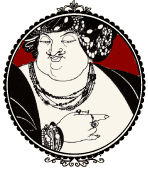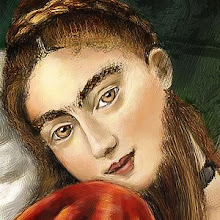 Since the first caveman flapped his wings like a bird, men have dreamt of flying. This dream has led to many fools jumping off precipitous cliffs decked in bird feathers. Everyone has probably heard the Greek myth of Daedalus and his son Icarus who lunged from their tower prison wearing feathers held together by wax and twine. All would have gone smoothly if Icarus had quit the horseplay, but when do you ever see a flying boy listen to his dad? That naughty Icarus flew too close to the sun, melted his wings and fell into the ocean. The lesson was clear: aim to high and you just might find yourself plummeting to your death. The Italian Mathematician, Giovanni Battista Danti didn’t quite learn this lesson and was convinced a few feathers and some determined flapping would make him fly like superman. Unfortunately, his attempts only landed him on the roof of Saint Mary’s Church.
Since the first caveman flapped his wings like a bird, men have dreamt of flying. This dream has led to many fools jumping off precipitous cliffs decked in bird feathers. Everyone has probably heard the Greek myth of Daedalus and his son Icarus who lunged from their tower prison wearing feathers held together by wax and twine. All would have gone smoothly if Icarus had quit the horseplay, but when do you ever see a flying boy listen to his dad? That naughty Icarus flew too close to the sun, melted his wings and fell into the ocean. The lesson was clear: aim to high and you just might find yourself plummeting to your death. The Italian Mathematician, Giovanni Battista Danti didn’t quite learn this lesson and was convinced a few feathers and some determined flapping would make him fly like superman. Unfortunately, his attempts only landed him on the roof of Saint Mary’s Church.Other men claimed to be more successful. In the middle ages, a monk named Elmerus was rumored to fly from the top of a tower in Spain. Supposedly, the great astronomer and mathematician, Regiomontanus invented a mechanical eagle which flew across the channel to greet Charles V. These tales seem unlikely, but there were some inventors who may have realized the dream of flight.
The Flying Chariot
In the 13th century, scientist and philosopher Roger Bacon was rumored to have designed a "flying chariot.” Bacon believed that a copper globe would rise upward if it were filled with something lighter than air. In essence, Bacon understood the mechanics of hot air balloons five centuries before his time.
 The Flying Maestro
The Flying MaestroLeonardo da Vinci's treatise on the art of flight is probably the most famous example of early aviation studies. For over sixteen years, Leonardo worked under the patronage of Ludovico Sforza, the Duke of Milan. (Ironically, his official title was not the duke’s painter but “the duke inventor”).
 Along with art commissions, Leonardo designed military equipment such as crossbows, catapults, lightweight bridges, cannon, armored vehicles, and poured his genius into fantastical flying machines (shown here). But Ludovico seemed unimpressed with Leonardo’s flying machines and worried more that the great Maestro would kill himself before completing the bronze equestrian monument to honor his father. We still don’t know for certain if Leonardo ever built his flying machines, but a few years later there was one man brave enough to take the plunge…
Along with art commissions, Leonardo designed military equipment such as crossbows, catapults, lightweight bridges, cannon, armored vehicles, and poured his genius into fantastical flying machines (shown here). But Ludovico seemed unimpressed with Leonardo’s flying machines and worried more that the great Maestro would kill himself before completing the bronze equestrian monument to honor his father. We still don’t know for certain if Leonardo ever built his flying machines, but a few years later there was one man brave enough to take the plunge… The Flying Bird Man
The Flying Bird ManJohn Damian was a surgeon in France before moving to Scotland around 1507. He then began his career as alchemist to James IV with the promise that he would discover the philosopher stone—the elixir to life. Damian’s experiments merely required copious amounts of aqua vitae, an aqueous solution of ethanol (aka whisky). Damian failed to discover the elixir to life, but must have got plenty drunk trying…or at least drunk enough to jump off the west parapet of Stirling Castle in a hen suit.
 Predictably, Damian’s tale does not end well. His makeshift hen wings carried him for about a half a mile until he descended ignominiously into a pile of dung and broke his leg. Many historians have argued that because his flight did not end with him falling to his death in the rocks 75 meters below Stirling Castle, he was technically the first man to fly….or at least the first man to hang glide in a hen suit.
Predictably, Damian’s tale does not end well. His makeshift hen wings carried him for about a half a mile until he descended ignominiously into a pile of dung and broke his leg. Many historians have argued that because his flight did not end with him falling to his death in the rocks 75 meters below Stirling Castle, he was technically the first man to fly….or at least the first man to hang glide in a hen suit.Damian never attempted another flight, but he did claim that he knew the reason for his failure. He should not have used hen feathers because they were obviously attracted to dung. I find this entirely plausible considering that hens are not too bright. Unfortunately, the theory only got him laughed out of the aviation business by everyone at James’ court. Damian then spent his final years with the far more rational goal of turning base metals into gold. We can guess how that turned out.
Sources and Further Reading:
The Times: Was 16th-century Scots alchemist the first man to fly?
The Daily Mail (London, England), The Flying Scotsman First; Leap of Faith: Abbot John Damian Threw Himself from Stirling Castle Bumpy Landing The Possible Route of the Abbot's First Flight, September 6, 2008.
Macdougall, Norman. History Today, The Kingship of James IV of Scotland - 'The Glory of All Princely Governing'?, Volume: 34 Issue: 11 November 1984 Page 30-36
Wells, George. The War in the Air. BiblioLife, 2008












3 comments:
His family must be proud "first man to hang glide in a hen suit". LOL!
Hilarious! Hen feathers are obviously attracted to dung...
Uh, well done dung boy.
Post a Comment